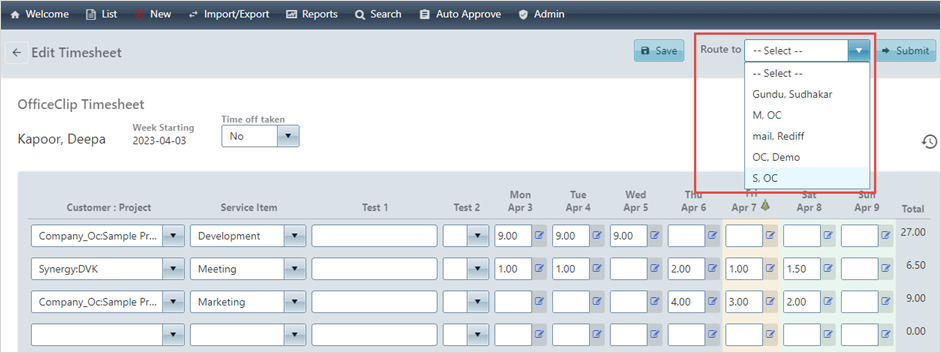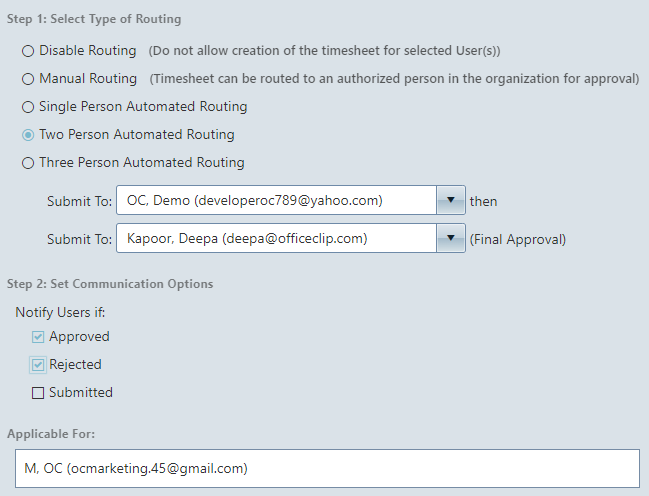Timesheet validation is the process of verifying an employee’s work hours and details to approve the timesheet and send it for payroll processing. Managers or supervisors validate the timesheets after the employee submits them at the end of the week.
The validation process is important in all organizations to ensure that employees are compensated accurately for their work. It also helps to keep track of accurate timesheets and identify any errors that need to be corrected. Additionally, a proper validation process can help prevent incorrect billing to clients, leading to financial losses.
There are two main types of timesheet validation processes: manual and automated.
➤ Manual process: In this process the employee selects the approver designated to approve the timesheet from the dropdown and sends it for approval.

➤ Automated process: In this process, the administrator sets the approver for each employee, and once the employee submits the timesheet, it will automatically be routed to the approver’s inbox.

An organization’s timesheet validation process will depend on its size, complexity, and needs. Small organizations can get away with a manual process, while larger organizations may need to implement an automated process.
Benefits of timesheet validation:
- Accurate compensation: Timesheet validation helps ensure that employees are compensated accurately for their work. This can help to improve employee morale and productivity.
- Prevents fraud: Timesheet validation can help to prevent fraud, such as employees submitting false timesheets or claiming overtime hours that they did not work.
- Improves compliance: Timesheet validation can help organizations to comply with labor laws and regulations.
- Improves reporting: Timesheet validation can help organizations generate accurate reports on employee productivity and usage.
If you are looking for a way to improve your organization’s timesheet validation process, there are a few things you can do:
- Create a clear and concise timesheet policy: Your timesheet policy should clearly define what information should be included on timesheets and the duration of submission.
- Provide training to employees on accurately completing timesheets: Employees should be trained to enter their work hours and work details correctly.
- Implement a system for tracking timesheet errors: A system for monitoring timesheet errors will help you to identify and correct any problems early on.
- Set up a process for resolving timesheet disputes:\ A process for resolving timesheet disputes will help to ensure that all employees are treated fairly.
Timesheet validation is a necessary process that can help to improve your organization’s efficiency, accuracy, and compliance. By following the tips above, you can create a timesheet validation process that works for your organization.

